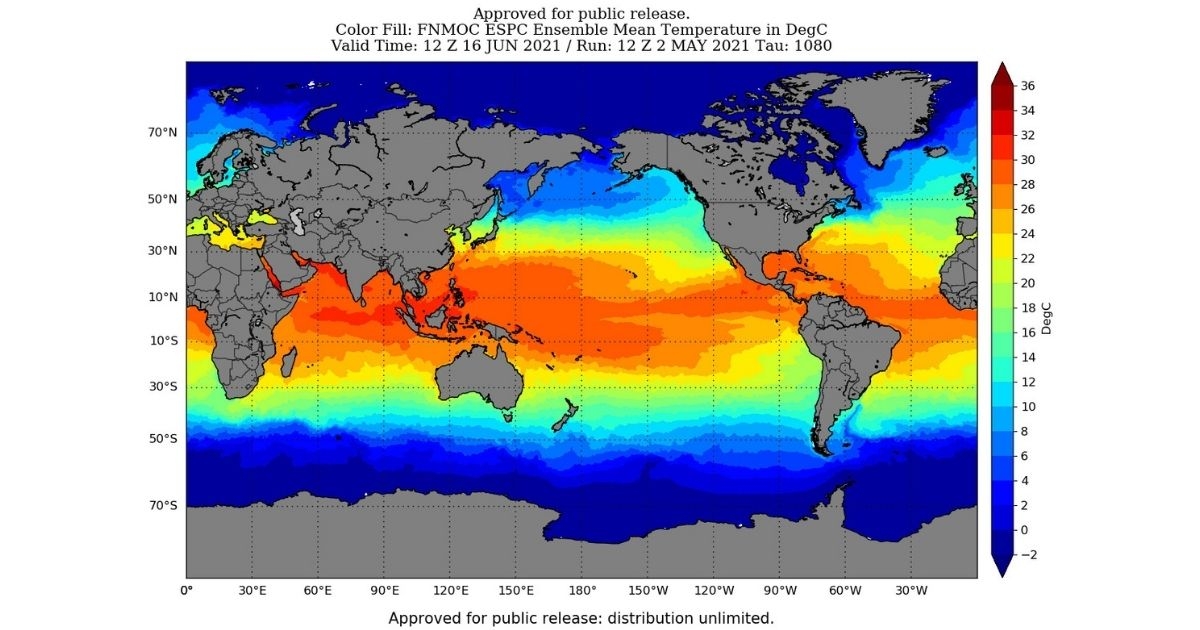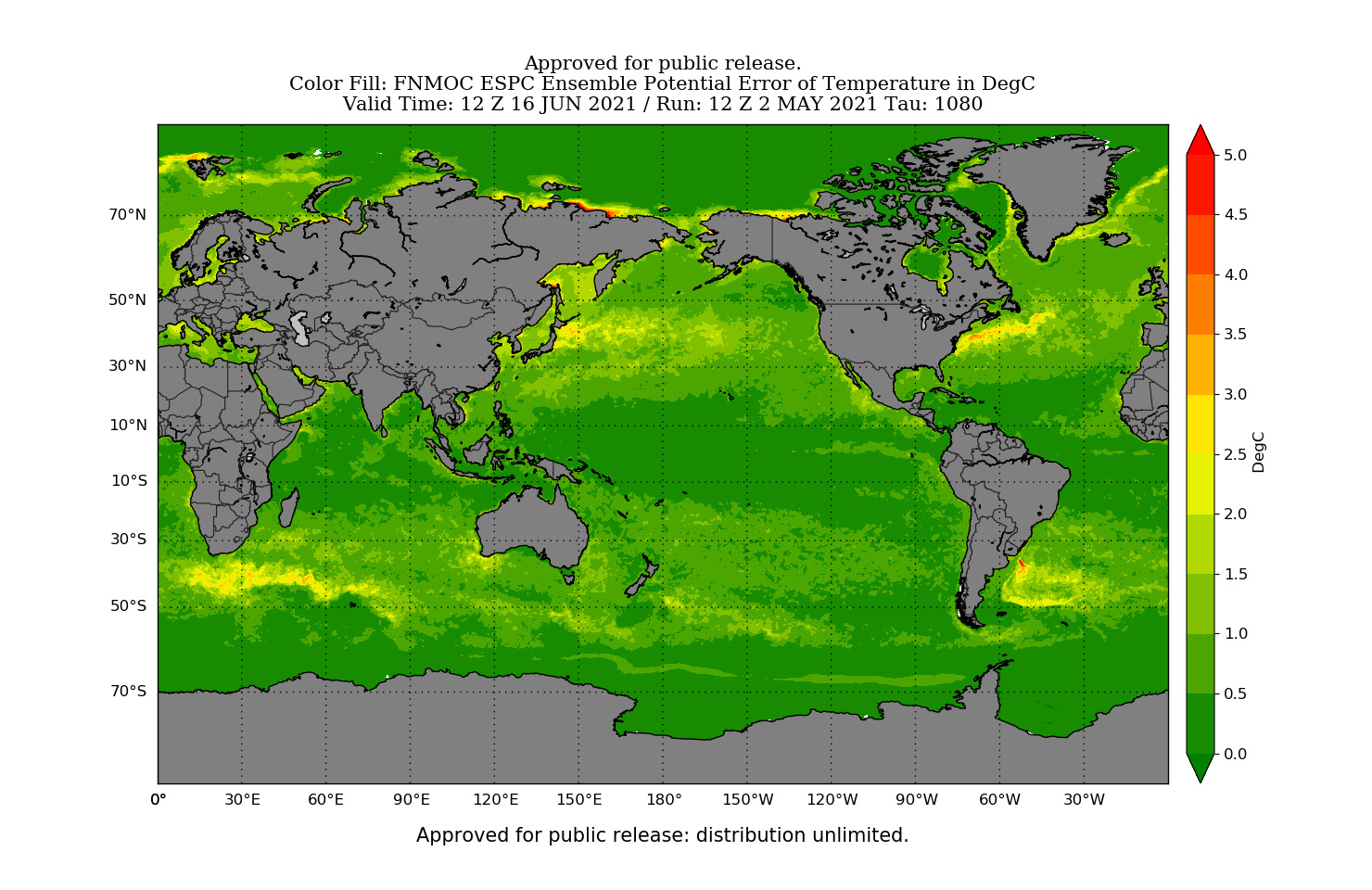Navy Forecasting Provides 45-day Advanced Environmental Predictions

Earth’s ocean-navigating environment just got a little less mysterious thanks to the U.S. Naval Research Laboratory developed Navy Earth System Prediction Capability (ESPC) global forecasting system that went live in late August.
Navy ESPC V1 provides the Navy with the first ever high-resolution ensemble capability for the ocean and sea ice that delivers both ensemble mean forecasts as well as a measure of uncertainty up to 45 days out.
“Atmosphere, ocean and sea-ice conditions affect naval operations,” said Carolyn Reynolds, a meteorologist at NRL’s Marine Meteorology Division in Monterey, California. “The transition of this new system provides, for the first time, environmental forecast information that fills the gap between weather and climate timescales to advise decision makers.”
Fleet Numerical Meteorological and Oceanography Center (FNMOC) released the new forecast system to provide these important program elements and provide users a range of forecasts and an understanding of the accuracy of the forecast.
Fleet Numerical Meteorological and Oceanography Center (FNMOC) Earth System Prediction Capability (ESPC) ensemble potential error of temperature in degrees Centigrade

“Previously, global ocean and sea ice forecasts consisted of a single deterministic forecast out to seven days, but now Navy ESPC V1 provides an extended high resolution capability out to 45 days and the ensemble mean is typically more accurate than a single forecast,” said Joe Metzger, a meteorologist at NRL’s Ocean Sciences Division and project collaborator.
With Naval forces operating in dynamic environments around the world, having an accurate global long-range forecast provided by the Joint Typhoon Warning Center, Naval Oceanographic Office, and National Ice Center is critical to the safety of service members and for operational planning.
“ESPC is enabling higher-level Navy preparation for subseasonal-to-seasonal prediction,” said Bill Kerr, the technical director at FNMOC. “For instance, knowing ahead of time the typhoon season in the Western Pacific will be particularly light or particularly heavy allows better force protection preparation and application of resources.”
Kerr believes this initial implementation is just the tip of the iceberg for how ESPC will revolutionize environmental forecasting.
“The real payoff for this technology is still in the future, when ESPC becomes a rapidly evolving testbed for Navy R&D, and the same systems provide dynamically reconfigurable modeling capabilities in one coupled system for operations,” Kerr said. “It’s good now, but it’s going to be game-changer for environmental forecasting.”

